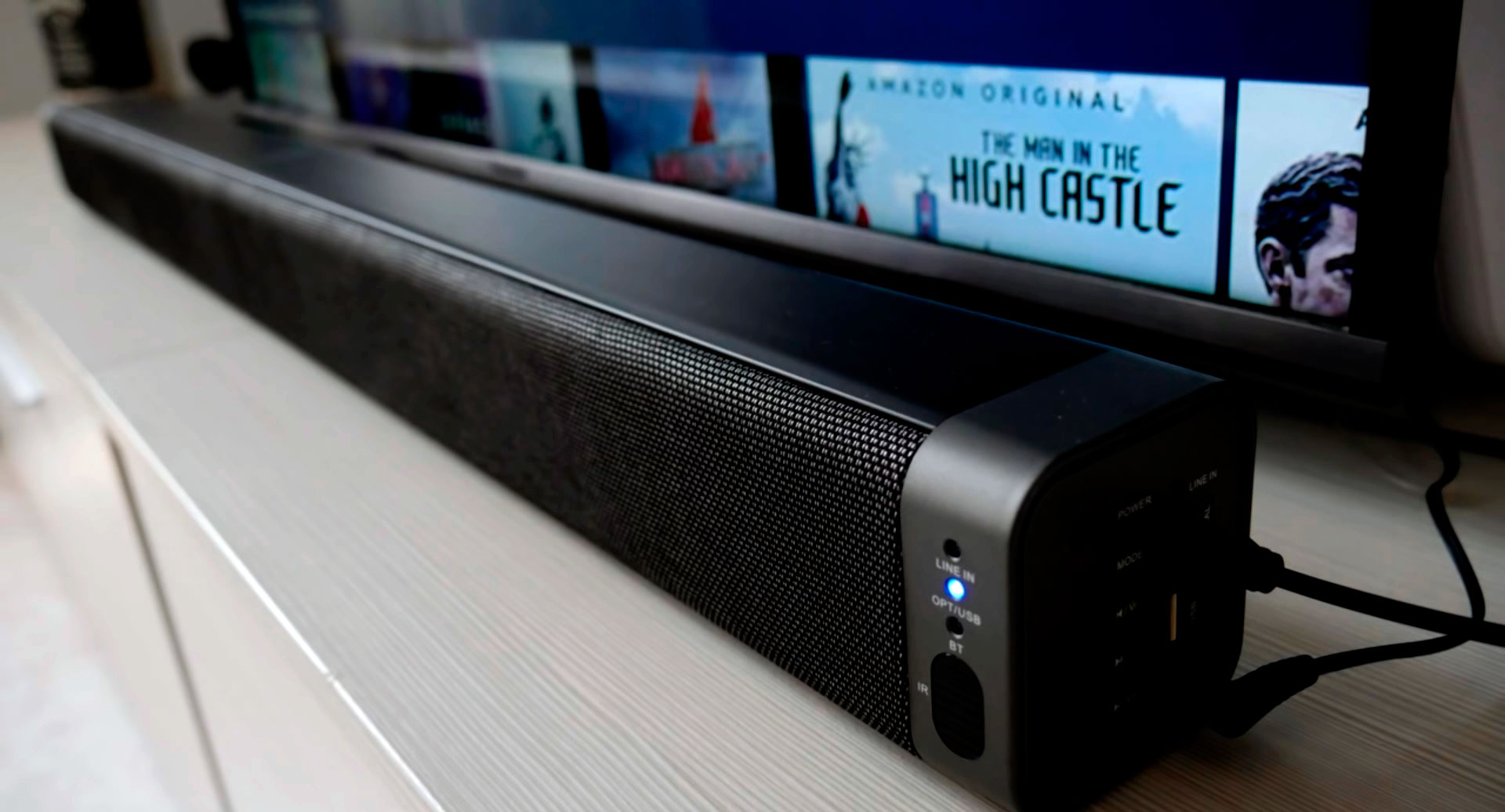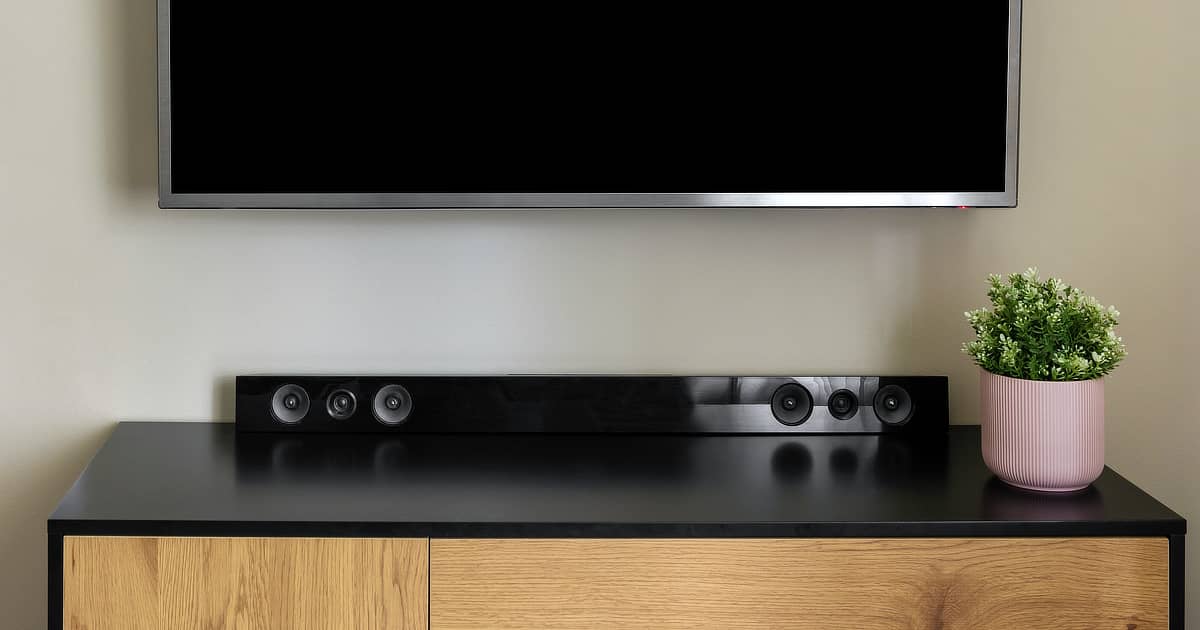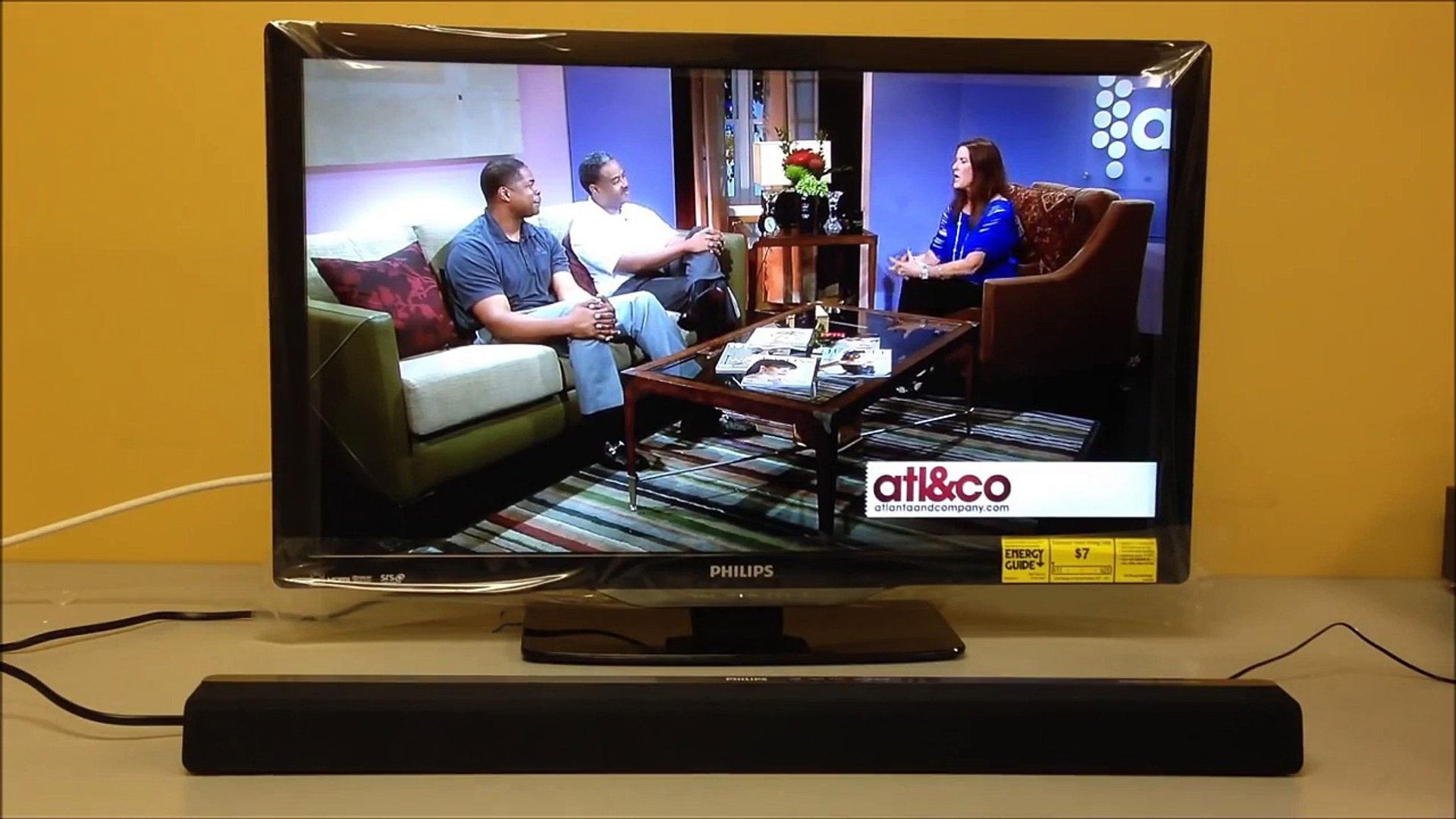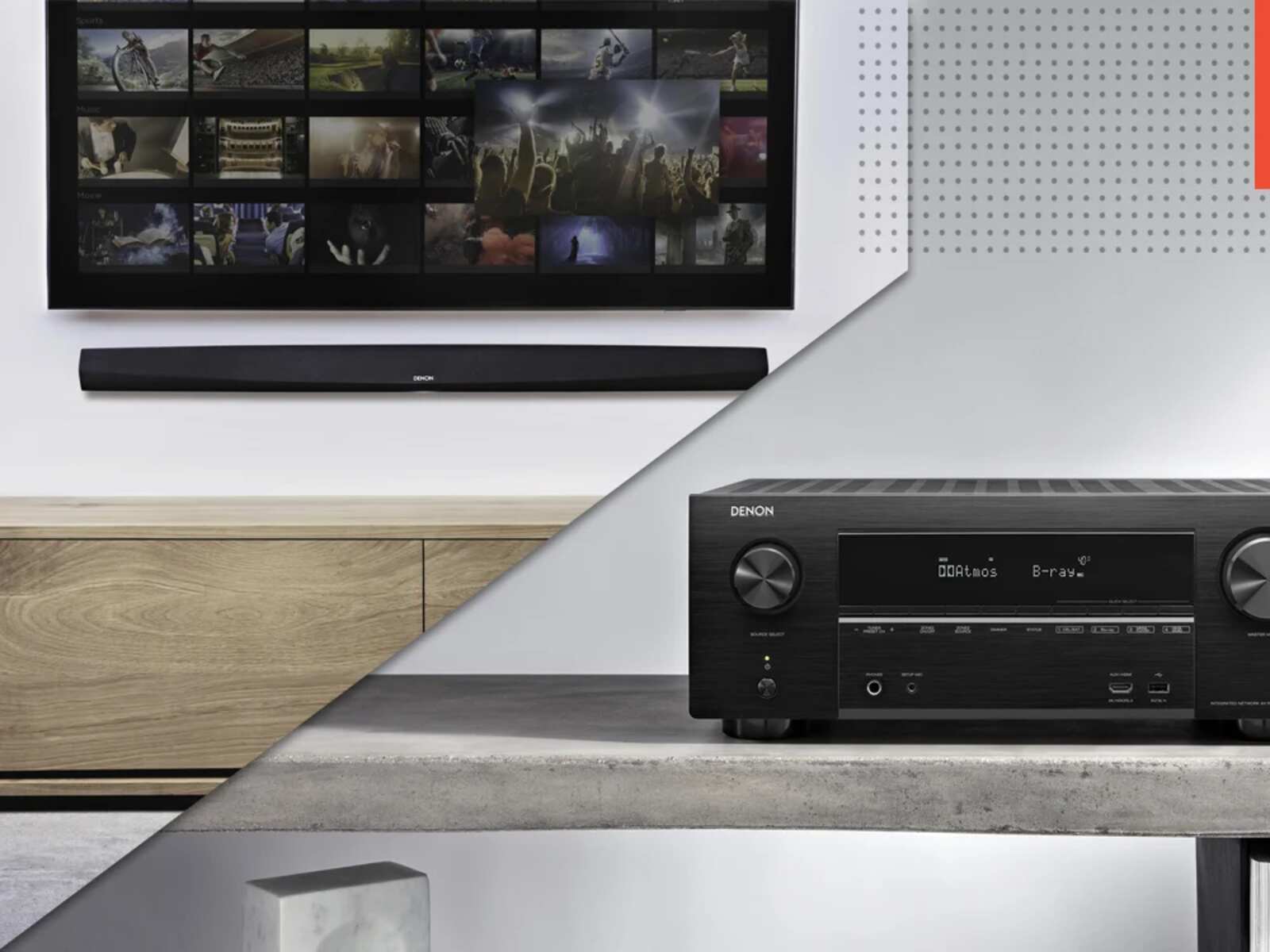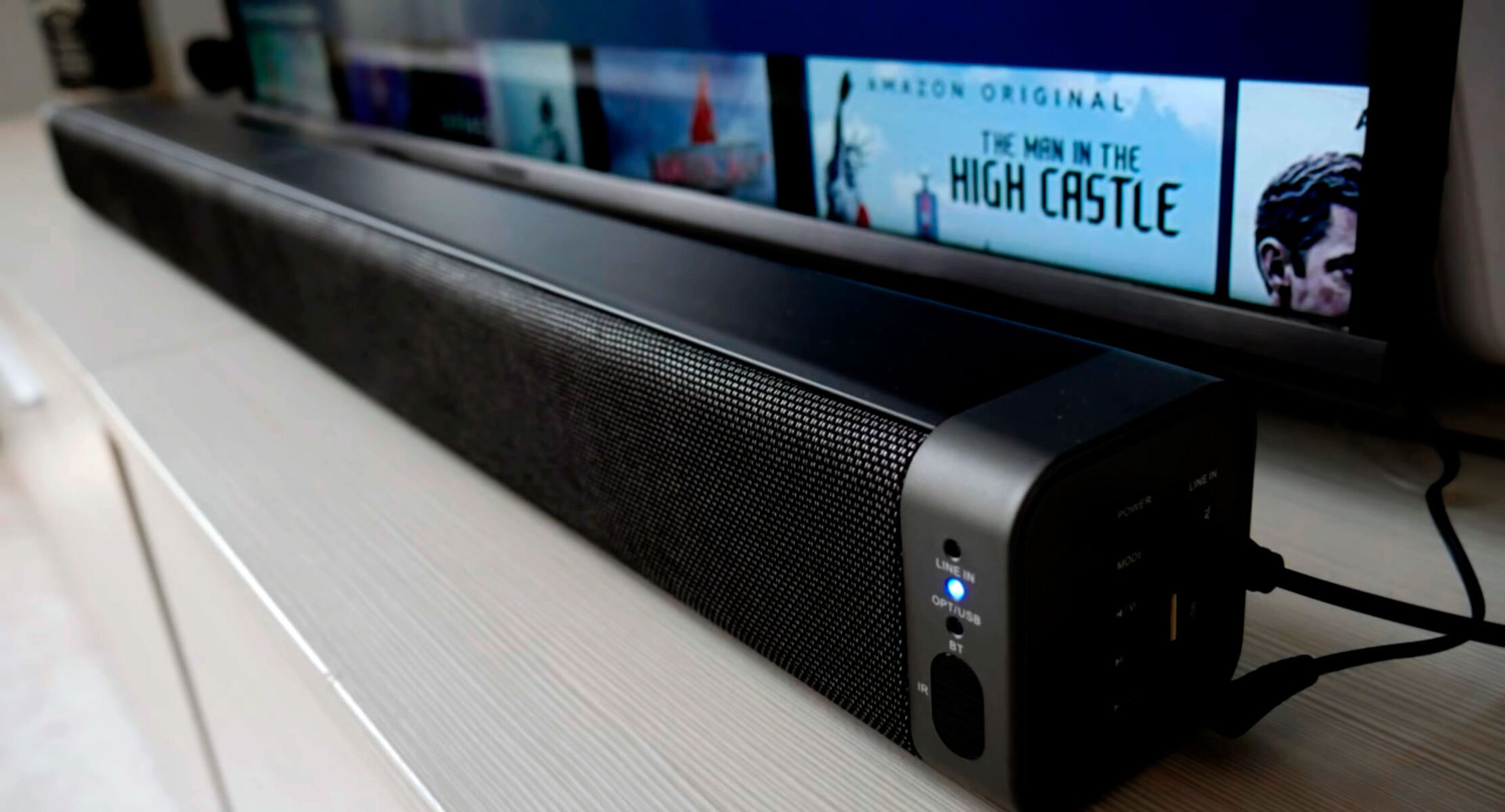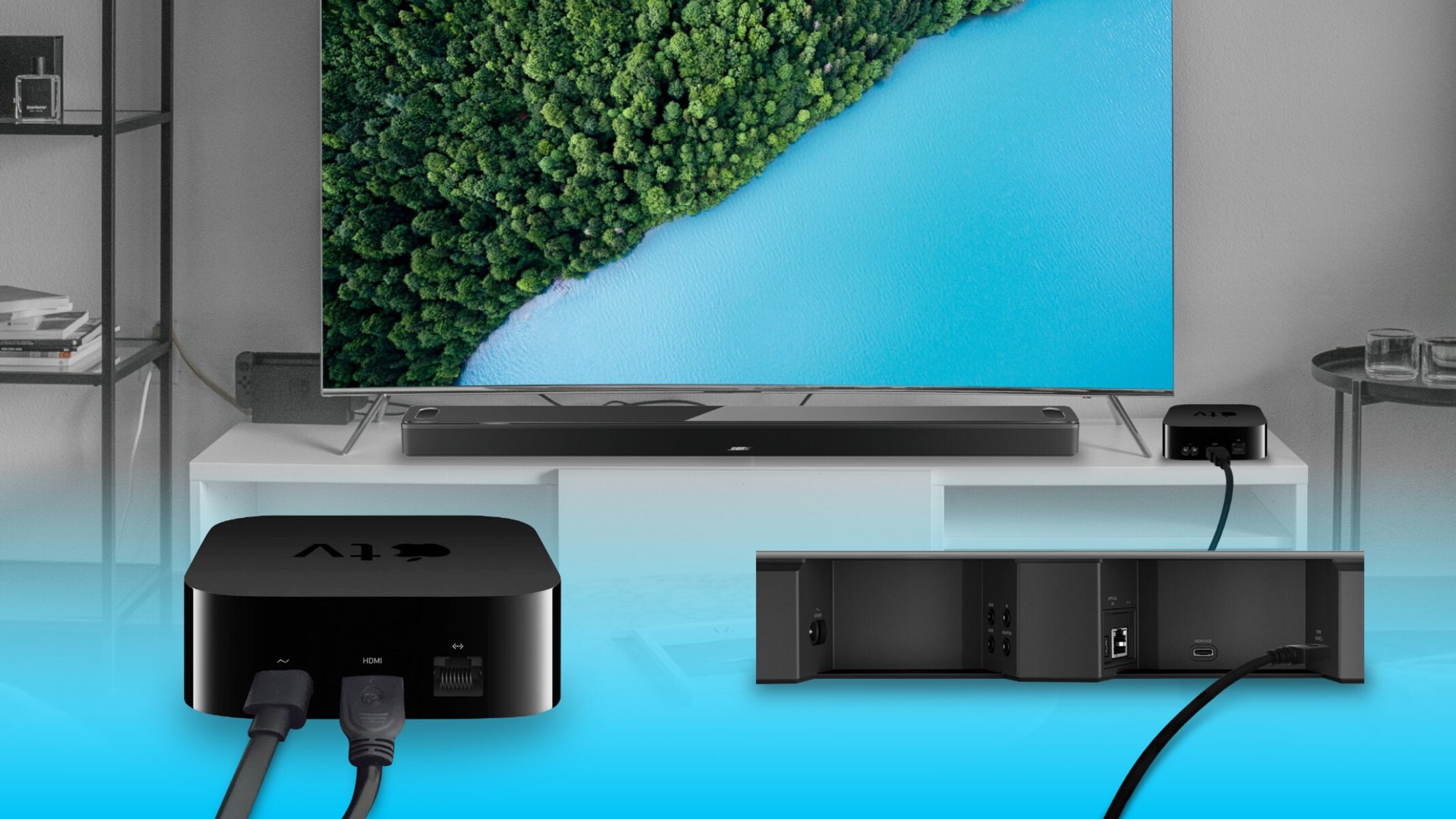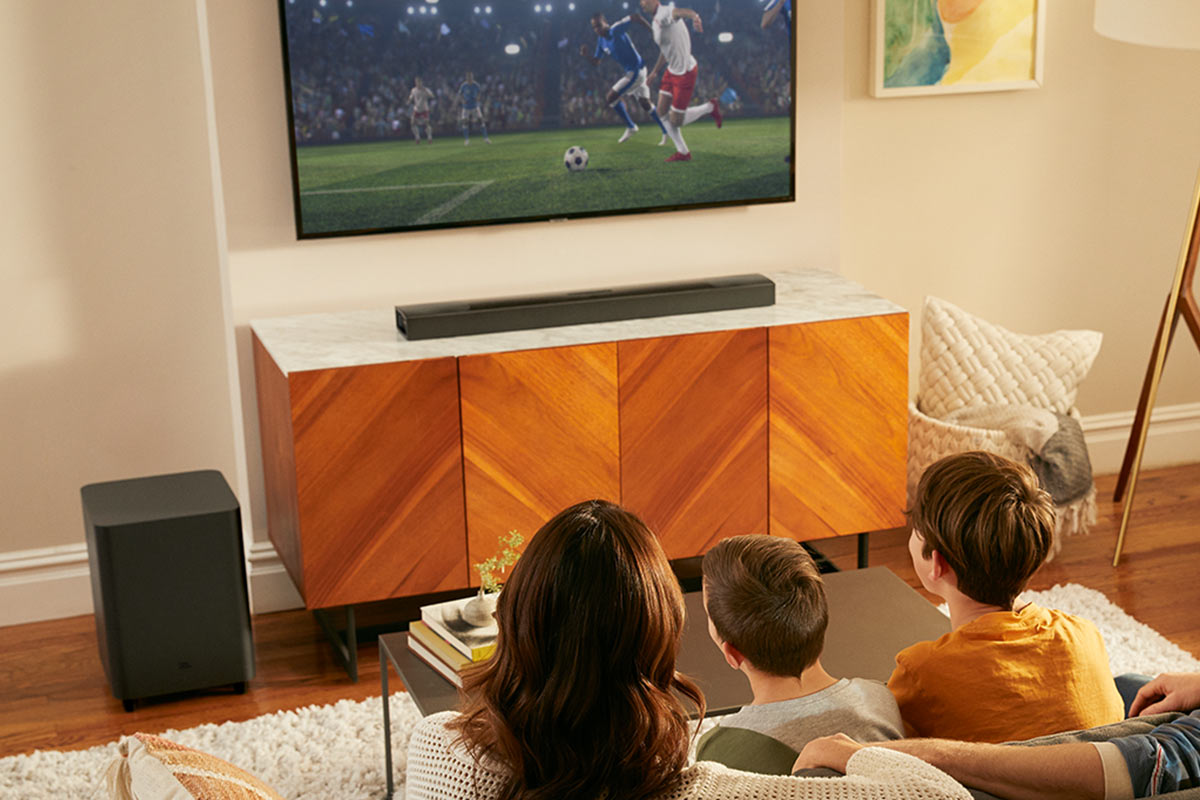Introduction
Welcome to the world of immersive audio! If you’re looking to enhance your TV-watching experience, a soundbar can be a game-changer. Whether you’re a movie buff, a sports enthusiast, or an avid gamer, a soundbar can deliver crisp dialogues, rich sound effects, and powerful bass, all in a sleek and compact design.
In this guide, we will walk you through the process of setting up a soundbar and connecting it to your TV. But before we dive into the nitty-gritty details, let’s take a moment to understand what a soundbar is and why it’s worth considering.
A soundbar is a single speaker system that is typically placed below or above your television. It consists of multiple speakers arranged in a single unit, including woofers, tweeters, and sometimes even subwoofers. The purpose of a soundbar is to provide a more immersive sound experience compared to the built-in speakers of your TV.
So why should you invest in a soundbar? Well, most flat-screen TVs have small and thin speakers, which often compromise the audio quality. Soundbars, on the other hand, are designed to produce better sound, with improved clarity, more depth, and wider soundstage. They can bring life to movies, TV shows, music, and games, making you feel like you’re right in the middle of the action.
Now that you understand the importance of a soundbar, let’s move on to the next section, where we will discuss how to choose the right soundbar for your needs.
Choosing the Right Soundbar
When it comes to choosing the right soundbar, there are a few factors you should consider. By understanding your needs and preferences, you can find a soundbar that will elevate your audio experience. Here are some key points to keep in mind:
- Size and Design: Soundbars come in various sizes and styles. Consider the dimensions of your TV and the space where you plan to place the soundbar. You want a soundbar that complements the aesthetics of your room and doesn’t overpower your TV.
- Audio Quality: Pay attention to the soundbar’s audio performance. Look for features like Dolby Atmos or DTS:X for a more immersive sound experience. Additionally, check for the frequency response range and look for reviews that mention the overall sound quality.
- Connectivity Options: Ensure that the soundbar has the necessary inputs and outputs to connect to your TV and other devices. Look for HDMI ARC (Audio Return Channel) support, as it enables seamless audio transmission between your TV and soundbar. Other connectivity options to consider are optical, Bluetooth, or wireless capabilities.
- Additional Features: Some soundbars offer extra features like built-in voice assistants, smart functions, and multi-room audio compatibility. Consider these features if they align with your needs and enhance your overall audio setup.
- Budget: Determine your budget for a soundbar. Remember that the price can vary based on the brand, features, and sound quality. While it’s essential to find the best value for your money, avoid compromising too much on audio performance.
By taking these factors into account, you can make an informed decision when selecting the right soundbar for your setup. Now that we’ve covered the basics of choosing a soundbar, let’s move on to the next section, where we will discuss the step-by-step process of setting up your soundbar.
Setting Up the Soundbar
Now that you have chosen your perfect soundbar, it’s time to set it up and unleash its audio power. Setting up a soundbar is relatively straightforward, and you don’t need any technical expertise to get started. Follow these steps to get your soundbar up and running:
- Placement: Find an ideal spot for your soundbar. It’s typically placed below or above the TV. Make sure there’s enough space and that it’s centered with the TV for optimal audio performance.
- Power Connection: Plug in the power cable of the soundbar into a wall socket. Ensure that the power cable is securely connected, and the soundbar is turned off.
- TV Placement: If your TV is wall-mounted, make sure the soundbar is mounted appropriately as well. If your TV is placed on a stand, position the soundbar accordingly in front of or below the TV.
- Cable Connection: Depending on the soundbar and TV models, you may need to connect them using an HDMI cable, optical cable, or Bluetooth. Refer to your soundbar’s manual for specific instructions on how to connect it to your TV.
- Wireless Connection: Some soundbars offer wireless connectivity options like Bluetooth or Wi-Fi. Follow the soundbar’s user manual to pair it with your TV or other devices wirelessly.
- Power On and Test: Once all the connections are in place, power on both your TV and soundbar. Set your TV’s audio output to the corresponding soundbar input. Play some content and test if the sound is coming from the soundbar. Adjust the volume settings as needed.
- Additional Configuration: Many soundbars have additional settings and features that can be adjusted. Explore these options, including sound modes, equalizers, and subwoofer levels, to customize the sound according to your preferences.
With these simple steps, you should have your soundbar set up and ready to enhance your audio experience. If you encounter any issues during the setup process, refer to your soundbar’s manual for troubleshooting tips or reach out to customer support for assistance. Now that we’ve covered the setup, let’s move on to the next section, where we will discuss how to connect your soundbar to the TV.
Connecting Your Soundbar to the TV
Now that your soundbar is properly set up, it’s time to connect it to your TV. There are several ways to accomplish this, depending on the available ports and connectivity options on both your soundbar and TV. Follow these steps to establish the connection:
- HDMI Connection: The most common and recommended method for connecting your soundbar to the TV is through HDMI (High-Definition Multimedia Interface). Most modern soundbars and TVs have HDMI ARC (Audio Return Channel) ports, which enable audio to be sent from the TV to the soundbar.
- Check if both your soundbar and TV have HDMI ARC ports.
- Connect one end of the HDMI cable to the HDMI ARC port on your soundbar and the other end to the HDMI ARC port on your TV.
- Make sure your TV’s HDMI ARC input is set as the primary audio source.
- Optical Connection: If your TV does not have an HDMI ARC port, you can use an optical cable to connect the soundbar to the TV.
- Locate the optical audio output port on your TV and the corresponding input port on your soundbar.
- Connect one end of the optical cable to the TV’s optical output port and the other end to the soundbar’s optical input port.
- Switch your soundbar’s input source to the optical connection.
- Wireless Connection: Some soundbars offer wireless connectivity options, allowing you to connect them to your TV without any cables.
- Refer to your soundbar’s manual to enable the wireless mode.
- On your TV, navigate to the wireless audio settings and search for the soundbar’s Bluetooth or Wi-Fi signal.
- Select the soundbar from the available devices and complete the pairing process.
After connecting your soundbar to the TV using one of these methods, ensure that the TV’s audio output settings are correctly configured. This may involve selecting the appropriate audio output format, such as Dolby Digital or Stereo, depending on your preferences and the capabilities of your soundbar.
Now that your soundbar is successfully connected to the TV, you can sit back, relax, and enjoy an immersive audio experience. In the next section, we will explore how to adjust the soundbar settings to further customize the audio output.
Adjusting the Soundbar Settings
Now that you have successfully connected your soundbar to your TV, it’s time to fine-tune the settings to your liking. Adjusting the soundbar settings can help you optimize the audio output and tailor it to your preferences. Here are some key settings you can explore:
- Sound Modes: Most soundbars offer different sound modes, such as Movie, Music, Sports, or Game mode. These modes are designed to enhance specific types of content and provide the best audio experience. Experiment with different modes to find the one that suits your preference for different types of media.
- Equalizer Settings: Some soundbars have built-in equalizers that allow you to adjust the audio frequencies manually. You can increase the bass for a more booming effect or tweak the treble for crispier sound. Experiment with the equalizer settings to achieve the desired audio balance.
- Subwoofer Level: If your soundbar comes with a separate subwoofer, you can usually adjust its volume level. The subwoofer is responsible for reproducing deep, low-frequency sounds, so finding the right balance between the soundbar and subwoofer can greatly enhance your audio experience.
- Virtual Surround Sound: Many soundbars offer virtual surround sound technology, which aims to simulate a surround sound experience without the need for extra speakers. Enable this feature to create a more immersive soundstage, making you feel like you’re in the middle of the action.
- Dialogue Enhancements: If you find that dialogues in movies or TV shows aren’t clear enough, check if your soundbar has a dialogue enhancement feature. This setting boosts the vocals and dialogues, making them more prominent and intelligible even in loud action scenes.
It’s important to note that each soundbar may have different settings and options available. Refer to your soundbar’s user manual for specific instructions on adjusting the settings. Take the time to experiment with different settings and find the combination that enhances your overall audio experience.
If you’re unsure about any particular setting or need further assistance, don’t hesitate to consult your soundbar’s user manual or reach out to customer support for guidance. Now that we’ve covered the soundbar settings, let’s move on to the next section, where we will discuss common troubleshooting tips for any issues you may encounter.
Troubleshooting Common Issues
While setting up and optimizing your soundbar, you may come across some common issues. However, most of these can be easily resolved with a few troubleshooting steps. Here are some of the common issues and their potential solutions:
- No Sound or Low Volume: If you’re not hearing any sound or the volume is low, first ensure that the soundbar is powered on and the volume is turned up. Check the connection between the soundbar and the TV to make sure it’s secure. Also, check the TV’s audio output settings to ensure the sound is directed to the soundbar.
- Poor Audio Quality: If you’re experiencing distorted or muffled sound, check the audio cables for any damage or loose connections. Adjust the equalizer settings to find the right balance and clarity. If using a wireless connection, ensure there are no heavy interference or obstacles between the soundbar and the TV.
- Noisy Subwoofer: If your subwoofer is producing unwanted noise or vibrations, make sure it’s placed on a stable surface and away from other electronic devices that may interfere with its performance. Adjust the subwoofer level to find the right balance between the soundbar and the subwoofer.
- Audio Sync Issues: If you notice a delay between the audio and video, some soundbars have an audio sync adjustment feature. Use this setting to synchronize the audio with the on-screen visuals. Adjust the audio sync until the audio and video are properly aligned.
- Remote Control Problems: If you’re experiencing difficulties with the soundbar’s remote control, check the batteries and ensure they are inserted correctly. Also, make sure there are no obstructions between the remote and the soundbar. If the issue persists, consider replacing the batteries or contacting customer support for further assistance.
If you encounter any other issues that are not mentioned here, refer to your soundbar’s user manual for specific troubleshooting steps or contact customer support for further assistance. With proper troubleshooting, you can overcome most common issues and enjoy a seamless audio experience.
Now that we’ve covered the troubleshooting tips, you are well-equipped to troubleshoot and resolve any issues that may arise during your soundbar setup. In the concluding section of this guide, we will recap the key points discussed and reiterate the benefits of setting up a soundbar.
Conclusion
Congratulations! You have successfully set up and connected your soundbar to your TV, enhancing your audio experience to a whole new level. By following the steps outlined in this guide, you have learned how to choose the right soundbar, set it up, connect it to your TV, adjust the settings, and troubleshoot common issues.
A soundbar provides an immersive audio experience, bringing your favorite movies, TV shows, music, and games to life. With its sleek design and powerful sound output, it enhances every aspect of your entertainment, making you feel like you’re right in the middle of the action.
Remember to choose a soundbar that suits your needs in terms of size, audio quality, connectivity options, and additional features. Take advantage of sound modes, equalizer settings, and subwoofer adjustments to customize the audio output to your liking, and troubleshoot any issues that may arise along the way.
With your soundbar properly set up and optimized, get ready to enjoy a new level of audio immersion and an enhanced viewing experience. Sit back, relax, and let the soundbar transport you into the world of captivating sound.
Thank you for following this guide, and we hope that you enjoy your newly set up soundbar for years to come!







